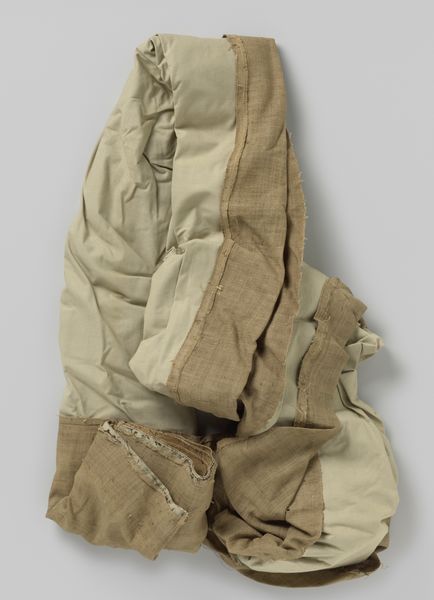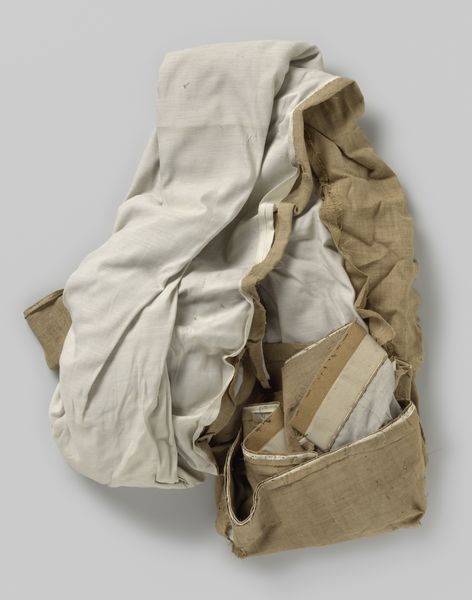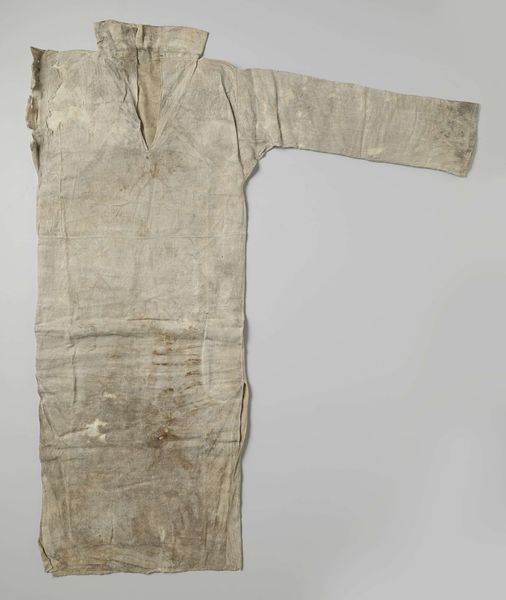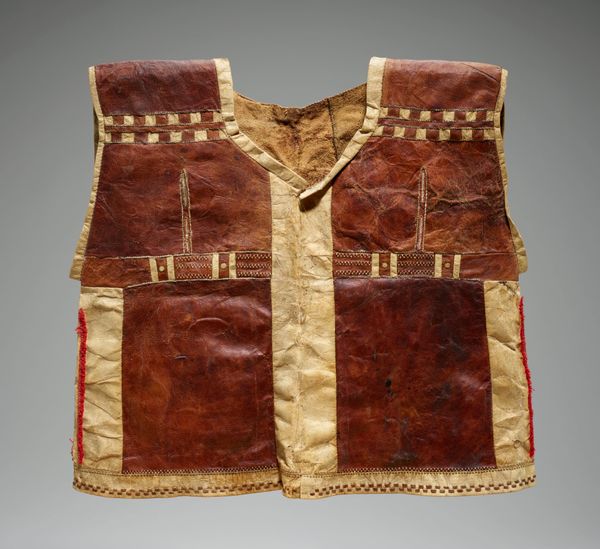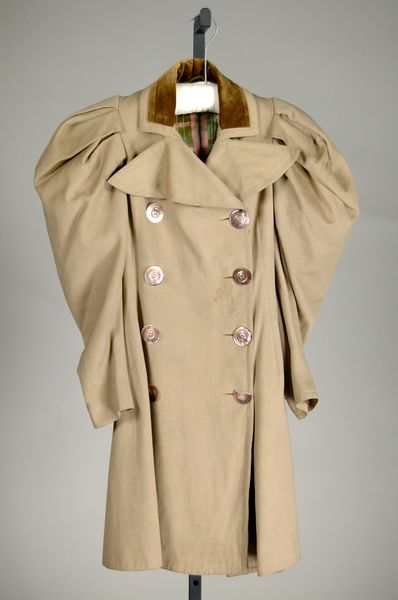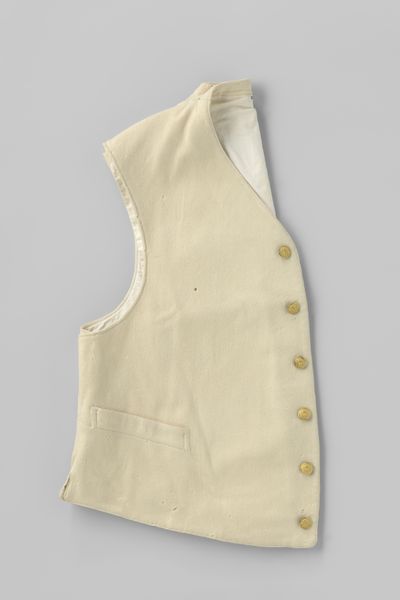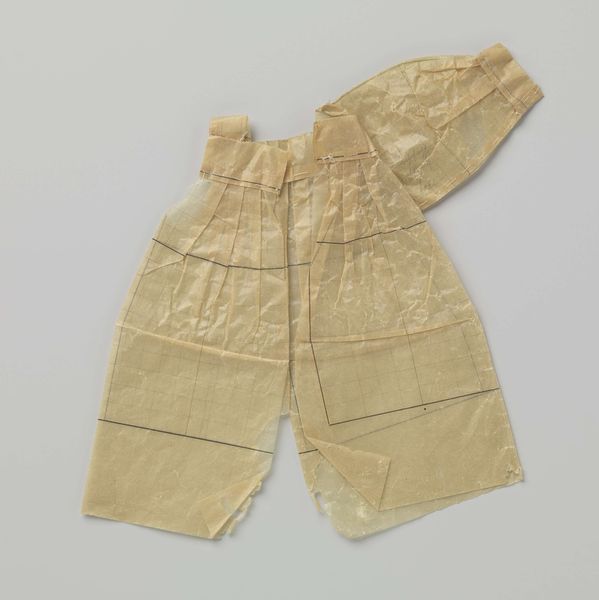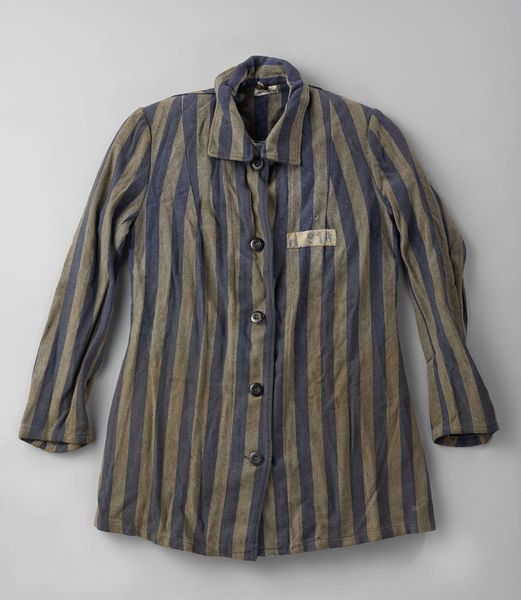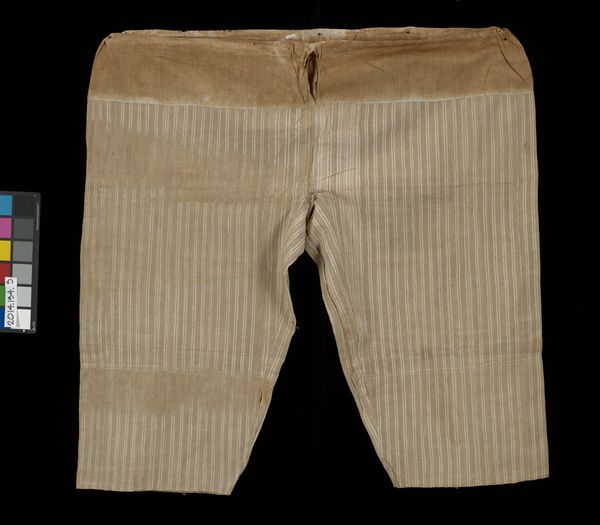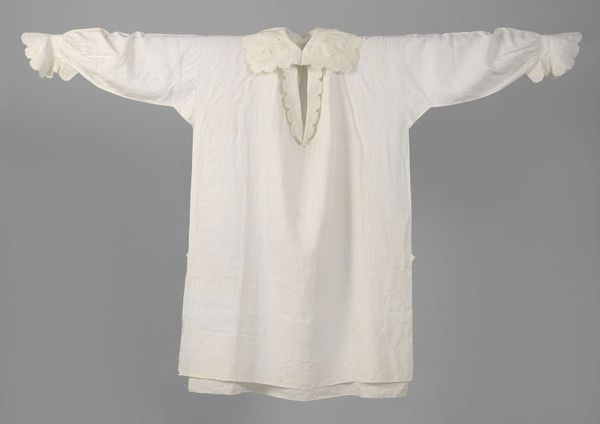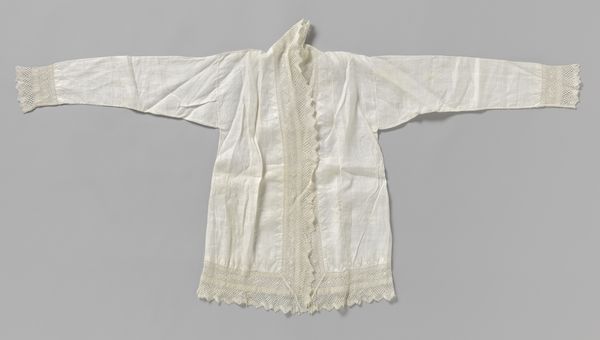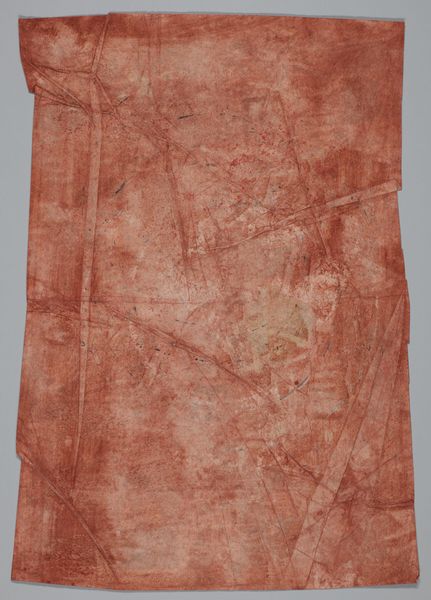
Jas, groen met wit gestreept, van dunne, soepele stof, met losse mouw en knopen c. 1740 - 1760
0:00
0:00
textile
#
fashion design
#
underwear fashion design
#
fashion mockup
#
textile
#
collage layering style
#
fashion and textile design
#
fashion based
#
clothing photo
#
fashion sketch
#
imprinted textile
#
clothing design
Copyright: Rijks Museum: Open Domain
Editor: Here we have an anonymous garment from circa 1740 to 1760, titled "Jacket, green and white striped, of thin, supple fabric, with loose sleeves and buttons." Looking at this textile piece, I’m immediately drawn to the repeating pattern. What else strikes you about the composition of this object? Curator: The enduring presence of the striped pattern is compelling, particularly how it interacts with the garment's aged condition. The stripes, predominantly green and white, establish a visual rhythm across the fabric. This repetition, a core element of pattern design, directs the eye along the contours of the coat. Note how the deterioration and material loss paradoxically accentuate the foundational design – the stripes remain despite the fragmentations. Do you observe any variations in the stripe alignments, and where might they occur? Editor: Now that you mention it, the sleeves seem misaligned with the stripes of the torso. I hadn’t considered that, I was more focused on the overall state of disrepair. Is there a message to read into the physical state of the work? Curator: Absolutely. The decay introduces a textural contrast that counters the flatness inherent in the stripes. Think of it as a kind of "反" (fǎn) element - a disruption that creates visual tension. Consider also the arrangement of the button closures. Although there aren’t many, the distribution affects our perception. Can you consider the strategic placement of these buttons and their relation to the striped pattern? Editor: So the pattern itself interacts with the closures? Fascinating, I'll have to examine similar pieces in museums with this in mind. Curator: Precisely. Appreciate how simple elements, expertly composed, give rise to something profound. This experience reveals the importance of observing the smallest choices, reflecting deeper meanings in the intrinsic properties of art.
Comments
No comments
Be the first to comment and join the conversation on the ultimate creative platform.
